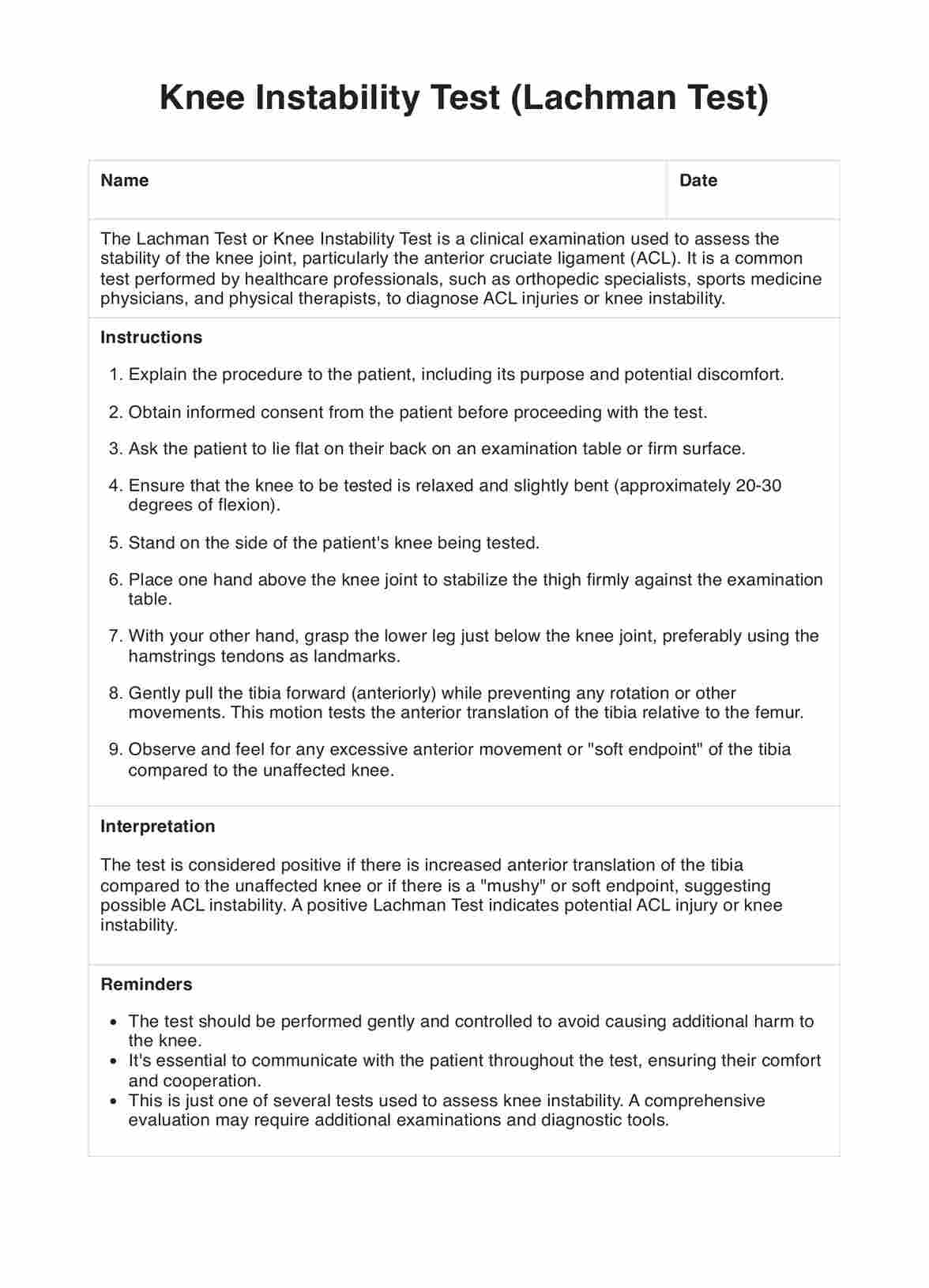The Instability Test does not utilize a scoring system. Instead, the clinician evaluates the patient's self-reported sensations of knee weakness, giving way, or instability while performing specific movements. If the patient experiences these symptoms, it indicates the presence of knee instability.

Knee Instability Test
Learn about the Knee Instability Test, a quick assessment for identifying knee instability. Download our free PDF template to conduct the exam easily.
Knee Instability Test Template
Commonly asked questions
The Knee Instability Test assesses the patient's ability to maintain stability and control in their knee joint during specific movements or activities. It aims to identify any feelings of knee weakness, giving way, or buckling, which can indicate knee instability.
The Knee Instability Test is a low-risk assessment. If the patient has no underlying knee conditions or injuries, they should experience no adverse effects from performing the test.
EHR and practice management software
Get started for free
*No credit card required
Free
$0/usd
Unlimited clients
Telehealth
1GB of storage
Client portal text
Automated billing and online payments











